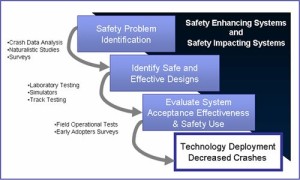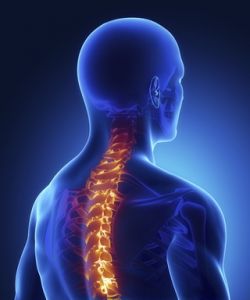Forensic & Human Factors Examination of Motor Vehicle Accidents.
The evidence can decide the case.
When disputes arise between operators, vehicle equipment manufacturers and vehicular service providers involved in vehicular accidents, many times, a forensic engineer can determine true causation from the physical evidence, diffusing erroneous allegations and legal theories asserted by other parties. Questions which seem complicated or a subject of dispute by laypeople, often aren't, as physical evidence often exists to substantively settle a matter; it's just a matter of knowing what to look for.
In the question of, “Did a brake failure cause the rear-end collision or did the driver actually brake too late,” an examination of the brake system can absolutely rule out mechanical failure, shifting a jury's focus back to the responsible party.
Or, in the question of, “Did the steering system fail, or, did the driver actually lose control while texting,” though a disputed crash timeline may make overlaying cell phone activity onto moments preceding the crash, the discovery of a malfunctioning steering system can absolutely exonerate a driver against the loud allegations of distracted driving.
Forensic examinations can even detangle complicated cases, such as, “Was the tire tread separation evidence found at the scene the cause, or the product, of the accident?” In such matters, engineers can often inspect: car, tire and crash dynamics, to pinpoint the cause and may even steer focus towards an operator who ignored tire pressure warning lights as evidenced by onboard system control module history.
The take away? Technical analysis can often yield reality contradicting evidence in erroneous context by lay people, and as such, a consultation with an engineering expert on technical matters, is often helpful in weighing the validity and relevance of evidence found at the scene.
Working in hand with forensic analysis, ‘Human Factors Analysis' can also shift a case, as safe machines are designed for their foreseeable operators' abilities, and as such, understanding human abilities, limitations and other response characteristics, is important to the design of vehicular equipment and the tasks drivers are reasonably expected to perform. Though a comprehensive discussion of Human Factors Analysis (and how it interacts with engineering product design) is beyond the scope of this article, human factors forensic engineers understand the comprehensive, iterative process followed in designing, testing and redesigning components and processes to make vehicles an ever safer mode of transport. This iterative improvement process stems from Vehicle Safety Research and human factors substantively constructs beyond a layperson's opinion, a scientific determination of how parties in vehicle accidents should reasonably act so the court can rule on matters of fault.
Vehicle Safety Research?

Sources:
1. NHTSA: Human Factors. http://www.nhtsa.gov/Research/Human+Factors/What+is+Human+Factors . Retrieved 2/22/16.
2. NHTSA: Vehicle Research & Testing. http://www.nhtsa.gov/VRTC . Retrieved 2/22/16.
3. NHTSA: Event Data Recorder Research Application Bibliography. http://www.nhtsa.gov/Research/Event+Data+Recorder+(EDR)/Event+Data+Recorder+(EDR)+Research+Applications+of+Bibliography . Retrieved 2/22/16.
Featured Engineer: Thomas E. Saunders, P.E., CFEI Senior Mechanical Engineer






